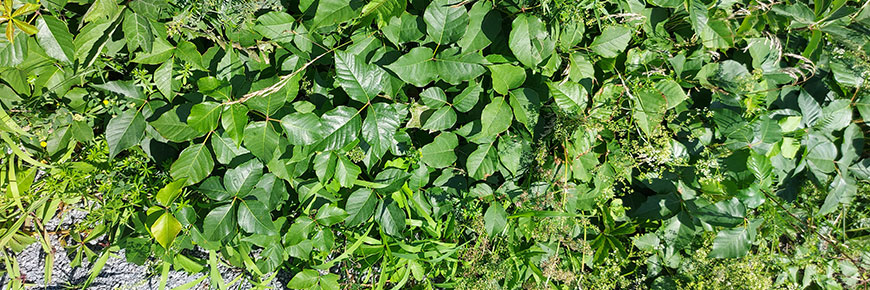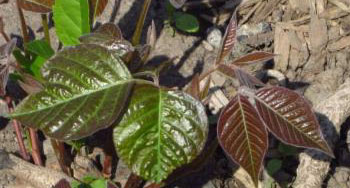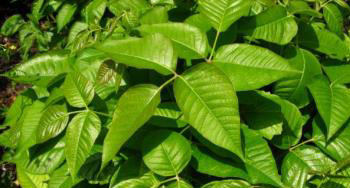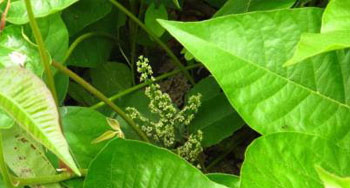
Rhus radicans L.
Poison Ivy
Chambly Canal National Historic Site
Description
Poison ivy (Rhus radicans L.) is a highly toxic perennial plant. Its sap contains an allergen, urushiol, which can cause a painful inflammation of the skin called allergic dermatitis. This dermatitis usually appears 24 to 48 hours after contact. Exposure to urushiol can occur through:
- direct contact from trampling, wind, insect damage, etc.
- indirect contact via a contaminated tool, clothing item or object, or from petting an animal with contaminated fur
- inhalation of ashes and dust particles in smoke when poison ivy plants are burned, or from ingestion of the sap
The severity of the dermatitis depends on the individual’s sensitivity and the extent of exposure. It is estimated that 9 out of 10 people are sensitive to poison ivy sap.
The risk of developing dermatitis is higher in the spring and early summer. However, dried or dead plants and contaminated objects can remain toxic for several months.
Identification
Poison ivy can be difficult to recognize but it is usually a bushy, thornless plant measuring 10 cm to 1 metre high. Its leaves are shiny and consist of three pointed leaflets (small leaves). The edges of the leaves may be smooth or serrated. The leaves are reddish when they emerge in the spring and turn green during the summer. In July, the plant produces clusters of cream-coloured flowers. In September, round fruit appear in clusters, varying between green and yellow. Birds and small mammals like to eat them and can contribute to the spread of the plant. In the fall, the leaves turn yellow, orange or red.



Impacts
All parts of the plant, including the roots, contain the toxin. Any contact with a damaged part of the plant can cause a reaction involving:
- redness or swelling
- blisters
- burns
- severe itching
- inflammation of the lungs if smoke is inhaled
The symptoms go away on their own after 7 to 15 days. If you have questions or require additional information, contact Info-Santé 811 or see a doctor if complications arise or symptoms last more than three weeks.
Prevention and protective measures
To avoid contact with the plant’s sap, several tips can be used:
- Learn to recognize and identify the species.
- Stay on trails and avoid trampling vegetation along the edge of the trail or path.
- Cover up with long clothing and closed shoes.
- Inspect and clean clothing and pets that have come into contact with the sap.
- Avoid picking or removing plants from vegetated areas.
What should I do if I come into contact with poison ivy?
- Quickly wash the area exposed to the plant with mild soap and cold water. It is best to use cold water, as hot water increases the body’s absorption of the allergen.
- Avoid scrubbing the skin too hard.
- Remove any debris from under your fingernails.
Related links
- Date modified :